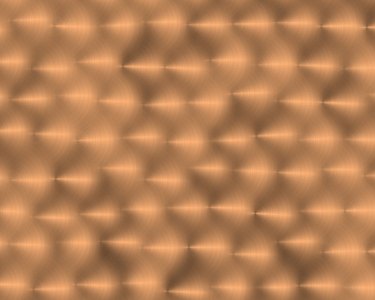Things You'll Need
Copper sheets, 16 oz weight
Plywood
Nails
Glove
Goggles
Metal shears
Ball peen hammer
Towel

Hammered copper has a distinctive look that is vastly different from any other surface. Because it is malleable and can be cut using metal shears, copper has a number of possible applications. Sheets of hammered copper can be used as a back splash, a counter top or wall hanging. Hammered copper is also very expensive. You can achieve the same effect by hammering the copper yourself. Find copper sheets at a home improvement store. Buy extra so you can practice your hammering technique before you begin hammering the final product.
Step 1
Put on gloves and safety goggles. Gloves will protect your hands from getting cut by the edges of the copper sheet.
Video of the Day
Step 2
Lay out a piece of plywood slightly smaller than your copper sheet. Roll out the copper sheet so it is on top of the plywood. Use 16 ounce copper sheet. This weight of copper will be malleable and easier to dent than heavier weights.
Step 3
Fold the edges of the copper sheet over the plywood. Nail the corners of the copper and plywood with nails to secure the copper sheet.
Step 4
Spread a thick towel across the top of the copper.
Step 5
Hold the ball peen hammer lightly in your hand. Hammer the copper lightly. Move over ½ an inch and hammer again. Repeat this process until you have hammered the entire surface. Check the copper sheet often to make sure that you like the results and adjust your technique as needed.
Step 6
Remove the towel and pull out the nails. Trim the copper with metal shears to remove the nail holes.
Tip
Store bought hammered copper is created by a machine, making the dents very uniform and close together. Imitate this effect by keeping the dents very close together and evenly spaced. If you prefer a more natural look, use irregular patterns and differing force to create bigger or smaller dents.
Video of the Day